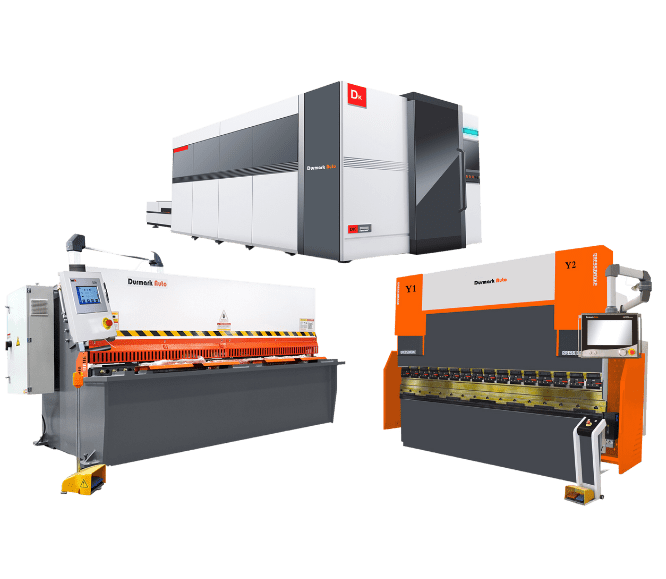
Request a Quote

Request a Quote

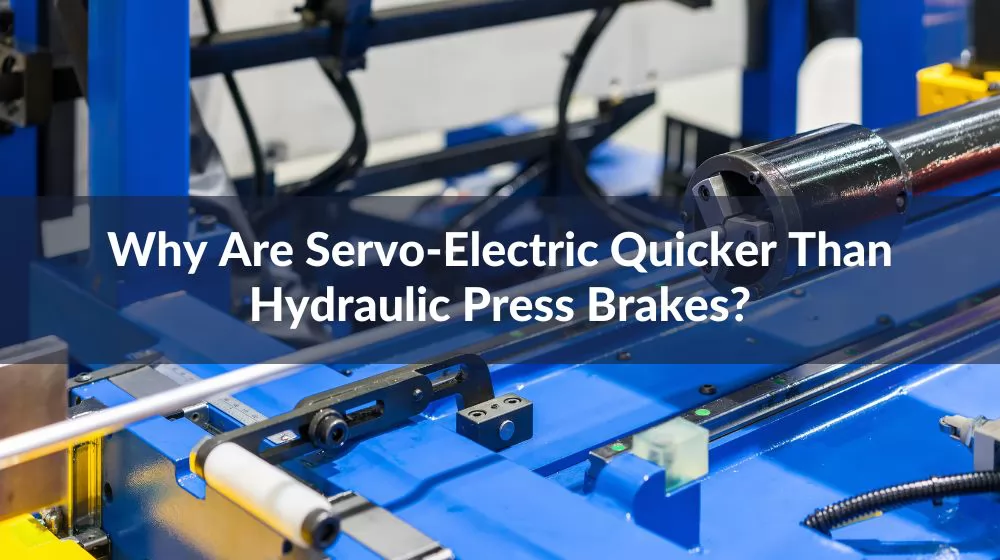
Table of contents:
In the world of metal fabrication, press brakes play a crucial role in bending and shaping metal sheets with precision and accuracy. Two popular types of press brakes are servo-electric and hydraulic press brakes. In recent years, servo-electric press brakes have gained Significant attention due to their exceptional speed and efficiency compared to their hydraulic counterparts. This article will explore the difference between the two and why the servo electric press brake is faster.
The bending process plays an important role in the field of manufacturing and processing. It can not only meet the geometric requirements of different products, but also strengthen the structure of the material, improve the strength and rigidity of the parts, and is suitable for applications with large loads and stresses. In addition, the bending process also plays a key role in the connection and assembly of parts, improving the stability and durability of the product. Its economic benefit lies in the relatively efficient processing method, which can complete the required shape in a short time, thereby reducing production costs. At the same time, the high precision and fast delivery characteristics of the bending process enable it to meet the needs of the precision field, shorten the production cycle, and better meet market demand.
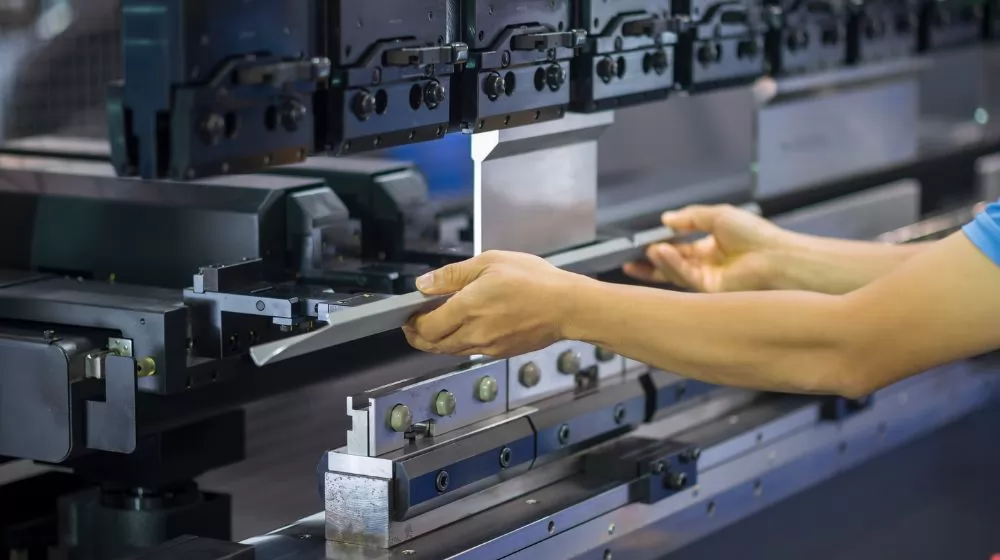
Working principle of servo electric press brake
First of all, the metal sheet to be processed needs to be placed on the workbench of the press brake. Typically, there will be a set of clamps or positioning devices on the table to hold and position the workpieces, ensuring that they remain stable during the bending process. Under the guidance of the operator, program and parameterize the servo electric press brake through the control panel or computer interface. This includes entering the desired bend angle, bend location, workpiece dimensions, and more.
The main power source of the press brake is the servo motor. Once the parameters are set, the servo motor will start moving at a precise speed and position according to the programmed instructions. They transmit power to the bending rod (also called ejector rod) of the press brake through transmission devices (such as screw rods, ball nuts, etc.). As the servo motor moves, the bending rod exerts pressure on the workpiece, causing it to bend. The shape and angle of the bending rod are adjusted according to the geometric requirements of the workpiece to achieve the desired bending angle and shape.
Servo electric press brakes are usually equipped with force sensors or pressure feedback systems that can monitor the pressure exerted on the workpiece in real time. This allows the control system to adjust the action of the servo motors according to the set parameters, ensuring precise control of the force applied during the bending process. Once the preset bending angle or shape is reached, the servo electric press brake stops automatically. The workpiece is released and the operator can remove it. After a complete bending process, the bending rod usually returns to its starting position for the next bending operation.
Servo electric press brakes are usually able to store multiple different bending programs, enabling the operator to select the appropriate program according to different workpiece requirements. This makes the machining process more efficient and precise.
Working principle of hydraulic press brake
The core of the hydraulic press brake is the hydraulic system, which includes hydraulic pumps, hydraulic cylinders, hydraulic oil tanks and other components. Before starting, the hydraulic system needs to be prepared to ensure that the hydraulic oil is sufficient and the system is in normal working condition. The sheet metal to be processed is placed on the table of the hydraulic press brake. Usually, there are fixtures and positioning devices on the table to ensure that the workpiece remains stable during the bending process.
The operator programs the hydraulic press brake through a control panel or computer interface. This includes entering the desired bend angle, bend location, workpiece dimensions, and more. Once the parameters are set, the hydraulic pump generates hydraulic oil flow, which transmits the hydraulic pressure to the hydraulic cylinder. The hydraulic cylinder starts to move, pushing the bending rod (also known as the ejector rod) to apply force on the workpiece.
The force exerted by the bending rod causes the workpiece to bend. The shape and angle of the bending rod is adjusted according to the geometric requirements of the workpiece to achieve the desired bending angle and shape. Hydraulic press brakes are usually equipped with force sensors or pressure feedback systems to monitor the pressure exerted on the workpiece in real time. The control system uses this feedback to adjust the output of the hydraulic pump to ensure that the applied force reaches a predetermined value.
Once the preset bending angle or shape is reached, the hydraulic system will automatically stop working. The workpiece is released and the operator can remove it. The hydraulic cylinder usually returns to its starting position, ready for the next bending operation. Similar to servo electric press brakes, hydraulic press brakes can also store several different bending programs. This enables the operator to select the appropriate program according to the requirements of different workpieces, improving production efficiency and precision.
Key Differences
power delivery:
Servo electric press brake: The servo electric press brake uses a servo motor as the main power source, and transmits power to the bending rod through a transmission device (such as a screw, a ball nut, etc.). This direct electric transmission enables precise control and adjustment of motion speed and position for precise bending operations.
Hydraulic press brake: A hydraulic press brake uses a hydraulic system in which a hydraulic pump generates hydraulic pressure, which is transmitted to the bending rod through hydraulic cylinders. Although the hydraulic system has a large power output capability, the characteristics of hydraulic transmission may lead to relative instability of motion speed and position, requiring finer control.
Control System:
Servo electric press brake: Servo electric press brake is usually equipped with advanced CNC control system, which can precisely control the rotation angle, speed and position of the servo motor. This control system enables high-precision and stable bending operations and is suitable for applications requiring high accuracy.
Hydraulic press brake: The control of a hydraulic press brake usually relies on the pressure and flow control of the hydraulic system. Although the hydraulic system can also achieve a certain accuracy, compared with the servo electric system, its control accuracy and stability may be slightly insufficient.
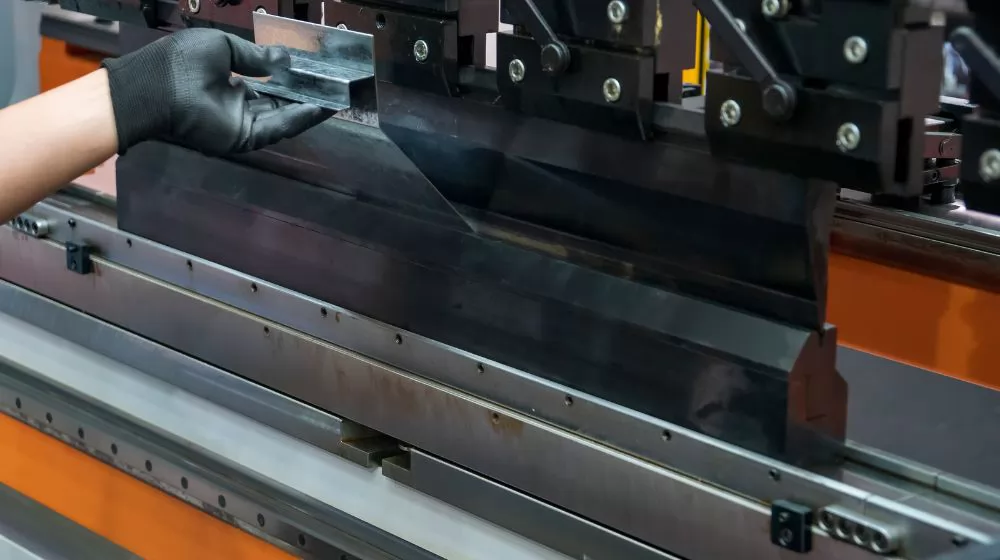
Quick response of servo electric press brake
Electric transmission: The servo electric press brake uses a servo motor as a power source, and its electric transmission can achieve faster acceleration and deceleration. The motor can respond quickly to the commands of the control system to achieve the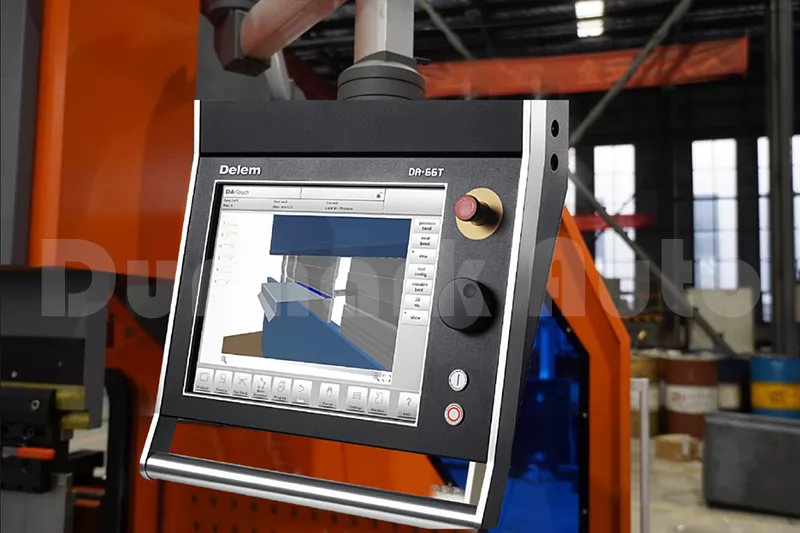 desired change in motion in a short time.
desired change in motion in a short time.
High-precision encoder: Servo electric press brakes are usually equipped with high-precision encoders to monitor the rotation angle and position of the motor. This allows the control system to know the state of the motor in real time, allowing it to more precisely control its motion, enabling fast and precise bending operations.
Precise control system: The servo electric press brake is equipped with an advanced numerical control system, which can adjust the speed and position of the motor at microsecond time intervals. This allows the operator to make adjustments to the machine in real time through the control interface, resulting in rapid operational response.
High-speed motion configuration: Servo electric press brakes often have configuration options that allow the motor to be set in high-speed motion mode. In some applications, when multiple bends need to be performed in a short period of time, the operator can select this mode to achieve faster motion speed and response time.
Compact mechanical structure: The design of servo electric press brakes is usually more compact, reducing the inertia and friction of mechanical transmission components. This helps reduce mechanical drag, allowing the motor to respond more quickly to movement commands.
Response time limit of hydraulic press brake
Hydraulic system delivery delay: The working principle of hydraulic system involves the flow of liquid in pipes, which can cause delivery delay. When the control signal is sent out, it takes a certain amount of time for the liquid to be transferred to the hydraulic cylinder and produce a corresponding action. This transfer delay can affect the actual response time of the hydraulic press brake.
Flow Restrictions: Flow restrictions in hydraulic systems can affect the speed of hydraulic cylinders. When fast movement is required, if the flow rate of the hydraulic system cannot meet the demand, the movement speed of the hydraulic cylinder may be limited, thereby affecting the response time.
Control system adjustment: The control system of the hydraulic press brake may need more adjustment and optimization to achieve a faster response time. This may involve aspects such as control parameters, valve adjustments, and design optimization of hydraulic systems.
Complex control method: The control of the hydraulic system is relatively complex, usually involving the opening and closing of hydraulic valves, flow adjustment, etc. Control of hydraulic systems can be more complex than direct motor control of servo-electric systems, which can have some impact on response time.
Influence of bending accuracy
Material properties: The hardness, flexural modulus, and flexural strain rate of the material will affect the degree of deformation during the bending process. Different materials behave differently in deformation, which can lead to different bending results and levels of precision.
Machine performance: The stability, transmission system, and control system of the press brake directly affect the bending accuracy. Advanced CNC systems and high-precision sensors often enable more precise bending operations.
Operating technique: The operator's experience and technical level are crucial to bending accuracy. Proper operating techniques, such as proper material positioning, proper process parameter setting and control, can greatly improve the accuracy of bending.
Tools and dies: The design and condition of bending tools and dies can also affect bend accuracy. Wear, deformation or improper tool selection can cause uneven deformation and inaccurate angles.
Environmental factors: Environmental factors, such as temperature changes, humidity, etc., may also affect bending accuracy. These factors can cause changes in material properties that can affect bending results.
Material pretreatment: The surface state of the material, protrusions, depressions, etc. may also affect the bending result. Prepared material surfaces provide more consistent bending results.
Bend angles and radii: Larger bend angles and smaller bend radii can be more difficult to control and require greater precision and attention.
Process parameters: The selection of process parameters such as bending force, bending speed, and angle adjustment will affect the bending accuracy. Proper process parameter settings can achieve better bending results.
Energy efficiency of electric press brake
Direct electric transmission: The electric press brake uses an electric servo motor as the main power source, and transmits the power directly to the bending rod through a transmission device (such as a screw rod, a ball nut, etc.). Compared with the energy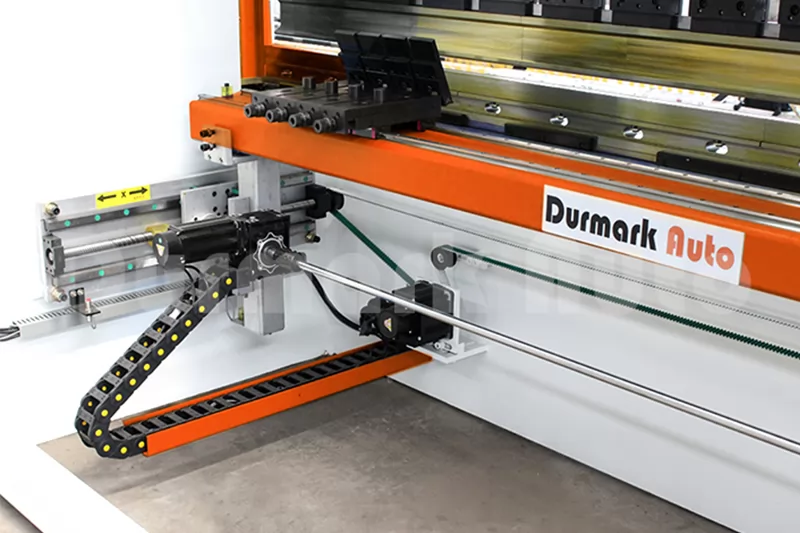 transfer process of the hydraulic system, this direct electric transmission is more efficient and can reduce energy loss.
transfer process of the hydraulic system, this direct electric transmission is more efficient and can reduce energy loss.
Energy recovery: Some advanced electric press brakes have energy recovery function. During braking or deceleration, the electric system can convert part of the energy into electrical energy and store it, thereby reducing energy waste.
Precise control: Electric press brakes are usually equipped with high-precision control systems, which can monitor and adjust the rotation angle, speed and position of the motor in real time. This allows the operator to more precisely control the bending process, reducing errors and rework, thereby reducing energy consumption.
Start-stop effect: The electric press brake can be started and stopped immediately when needed, without a warm-up or cool-down process. This reduces wasted energy, especially when frequent bending operations are required.
No hydraulic oil leakage: Compared with the hydraulic system, the electric press brake does not have the problem of hydraulic oil leakage, which reduces the waste of energy and materials.
Energy consumption monitoring: Some electric press brakes have energy consumption monitoring functions, which can monitor energy usage in real time and help operators better manage and optimize energy use.
Energy consumption of hydraulic press brake
Energy consumption of the hydraulic system: The core of the hydraulic press brake is the hydraulic system, including hydraulic pumps, hydraulic cylinders, valves, etc. Hydraulic pumps generate hydraulic pressure by consuming electrical energy, and hydraulic cylinders convert hydraulic pressure into mechanical motion. Energy is mainly consumed in the work of hydraulic pumps to generate hydraulic pressure and maintain the operation of the system.
Power consumption: In addition to the hydraulic system, other parts of the hydraulic press brake, such as motors, control systems, display screens, etc. also need power supply. Especially in operation, the motor will consume electrical energy to provide mechanical power to achieve bending of the workpiece. Control systems and displays also require power to keep them running.
Heating and cooling: During the hydraulic bending process, the hydraulic oil in the hydraulic system may become hot due to work and needs to be cooled. Cooling devices, such as chillers, consume additional electricity to maintain the proper temperature to keep the hydraulic system operating properly.
Start and stop energy consumption: During the start and stop of the hydraulic press brake, especially in the start-up phase, the motor may require more energy to overcome inertia and reach the required operating speed. These processes may result in some energy consumption.
Energy Recovery: Some modern hydraulic press brakes may feature energy recovery. During braking or deceleration, the system can convert part of the energy into electrical energy and store it to reduce energy waste.
Duty Cycle: Long duty cycles may cause the hydraulic system to work continuously, consuming more energy.
Energy efficiency design: Some hydraulic press brakes adopt energy efficiency design to reduce energy consumption by optimizing hydraulic systems, motors and control systems.
Maintenance requirements for servo electric press brake
As a high-precision metal processing equipment, servo electric press brake needs regular maintenance to ensure its stable operation, accuracy and longevity. Maintenance requirements include lubrication maintenance to keep the hydraulic and transmission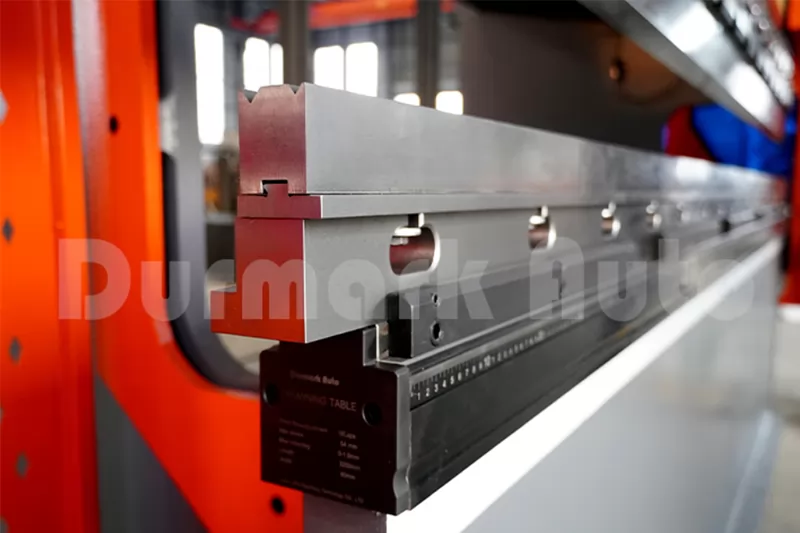 systems working properly; regular cleaning to prevent debris accumulation; inspection of electrical systems and fasteners to ensure safety and reliability; calibration of encoders to maintain accurate position; maintenance of cooling systems to control hydraulic oil Temperature; spare parts management to reduce downtime; and regular inspection and maintenance plans, combined with these measures, can ensure the continuous and efficient operation of the servo electric press brake and reduce the risk of potential failure.
systems working properly; regular cleaning to prevent debris accumulation; inspection of electrical systems and fasteners to ensure safety and reliability; calibration of encoders to maintain accurate position; maintenance of cooling systems to control hydraulic oil Temperature; spare parts management to reduce downtime; and regular inspection and maintenance plans, combined with these measures, can ensure the continuous and efficient operation of the servo electric press brake and reduce the risk of potential failure.
Maintenance challenges of hydraulic press brakes
Hydraulic press brakes present some challenges when it comes to maintenance. First, the complexity of hydraulic systems can lead to increased maintenance difficulties, involving hydraulic oil changes, troubleshooting leaks, and inspections of valves and piping. Second, the energy consumption and oil temperature control of the hydraulic system need to be continuously monitored and adjusted to ensure the efficiency and stability of the system. In addition, the working environment of hydraulic press brakes may contain impurities such as dust and metal shavings, which may affect the normal operation of hydraulic components. At the same time, the failure of the hydraulic system may cause interruption of production, requiring quick response and repair, increasing the urgency of maintenance.
Comprehensive consideration of operating costs
Purchase Cost
Maintenance and Maintenance Costs
Energy Consumption
Productivity
Operation Training
Failure Rate and Downtime
Technical Support and Repair Services
Equipment Life
The demand for press brake speed in different industries
Automotive Manufacturing: The automotive manufacturing industry often requires a large number of metal components, covering a variety of shapes and sizes. In this industry, production efficiency is the key, so a servo electric press brake may be more suitable, because its higher operating speed can increase production capacity and meet the needs of high output.
Aerospace industry: The aerospace industry has very high requirements on the precision and quality of components, so more attention is paid to the stability and accuracy of the process. While speed is important, there is also the need to ensure precision and reliability during the bending process, which may make hydraulic press brakes more popular.
Architectural and structural field: In this field, metal components are often large and vary in size. Productivity is important, but component stability and quality are also crucial. Hydraulic press brakes may be more suitable as they can handle large sizes and heavy materials while maintaining consistent bend quality.
Furniture Manufacturing: The furniture manufacturing industry requires the manufacture of metal components in a variety of shapes and sizes to accommodate customization needs. Speed and precision can be equally important, so options may vary by product type, but the higher speeds of servo electric press brakes may be better suited for high-volume production.
Electronics and electrical industry: In this industry, some small parts require high-precision and high-speed bending processing to adapt to mass production. Servo electric press brakes may be better able to meet the high-speed processing needs of these small parts.
Agriculture and food processing: These fields may require the manufacture of some special shaped parts, but the production scale is relatively small. Therefore, stability and adaptability to different shape requirements may be more important, and hydraulic press brakes may be more suitable.
How to choose the right machine according to the demand
Understand requirements: First, have a clear understanding of your production requirements. Consider the type of material you need to process, size range, product geometry, production batch size and expected production rate, etc. These factors will affect your machine performance needs.
Performance Matching: Compare your needs with the performance of different machines. For example, if you need high-speed machining, you may be inclined to choose a servo electric press brake; if you are more concerned about precision and stability, you may be inclined to a hydraulic press brake.
Budget limit: Set the budget range and choose the appropriate machine according to the budget. Note that low-cost machines may have limitations in performance and quality, so a cost-effective tradeoff needs to be made.
Maintenance Costs: Consider long-term maintenance and operating costs. Different types of machines will have different costs for maintenance and upkeep, and the impact of these costs on budget and productivity needs to be considered.
Technical support and service: Consider the technical support and after-sales service provided by the supplier. Make sure the supplier has the ability to provide training, repair and spare parts support to keep the equipment up and running.
Scalability and Adaptability: Consider future development needs. Choose machines that can be adapted to different product and process needs to avoid premature equipment obsolescence.
Market Evaluation: Research the different makes and models of machines on the market. Read customer testimonials and professional reviews to learn about the machine's actual performance and user experience.
Field Tests: If possible, conduct field tests in person at the supplier. By operating a machine, you gain a better understanding of its capabilities, how it operates and its suitability.
Energy Consumption
As we briefly mentioned before, servo-electric press brakes consume significantly less energy than hydraulic press brakes, nearly 80% less than hydraulic alternatives. If you look at the power consumption of the former during operation, it is directly proportional to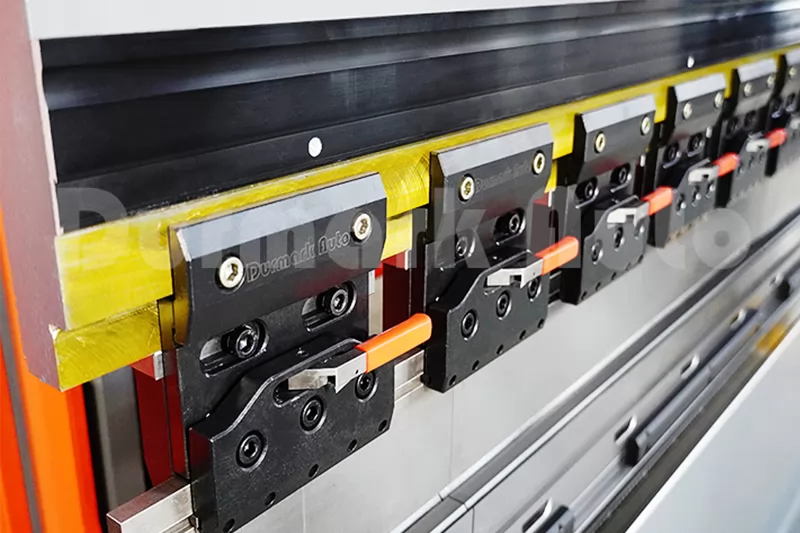 the load power. This might make you wonder how a servo electric press brake can save even more energy.
the load power. This might make you wonder how a servo electric press brake can save even more energy.
However, this is the only time the machine consumes energy. The rest of the time, the servo electric press brake does not need to consume energy. However, the situation is different with a hydraulic press brake because it consumes electricity continuously even when it is not running. Therefore, it consumes more energy than other types of machines.
Envirnmental Factor
Businesses and industries around the world are becoming increasingly aware of environmental issues. As a socially and environmentally responsible entity, you need to invest in tools, machinery and technology that help promote the sustainable development of natural resources.
From this aspect, the servo electric press brake is a more ideal equipment choice than the hydraulic press brake. The reason is that the former is more environmentally friendly than the latter for the following reasons:
It consumes less energy
Better precision and accuracy, resulting in less material waste
Less carbon emissions
Up to 70% reduction in noise pollution is a special feature of the eB Ultra
Cost
Finally, servo electric press brakes are generally more economical than hydraulic press brakes. The fact that you need to run your hydraulic press brake all day is reason enough to explain why it is more expensive. Running such a large machine all day will mean paying more for fuel.
In addition, the maintenance cost of hydraulic press brakes is much higher than that of servo electric press brakes, because the latter have different functions such as automatic lubrication systems.
All of these factors together can help you get a clear idea of which tool is best for your use and your company. Based on these factors, you can help you make better, more informed decisions.
However, considering these characteristics and comparisons, it is easy to understand that servo electric press brakes are faster, more efficient and more beneficial than traditional hydraulic press brakes. They excel in every way and are a better alternative to hydraulic press brakes.
By reading this article, I believe you have a general understanding of the two, hoping to help you choose the most suitable press brake. But please be sure to buy from a trusted supplier, Durmark, as a leading press brake manufacturer, has rich experience and can provide you with satisfactory service.
.png)


